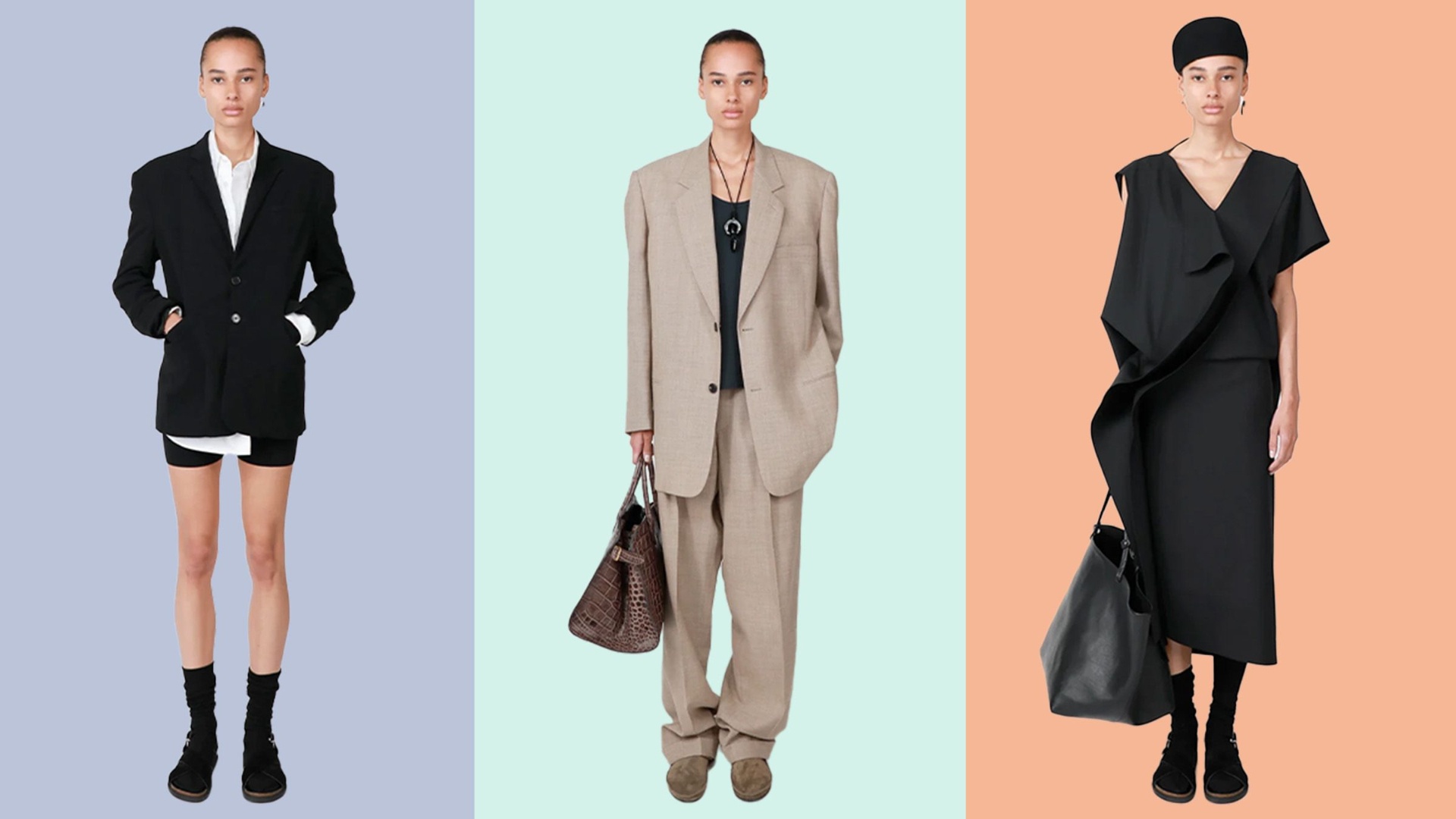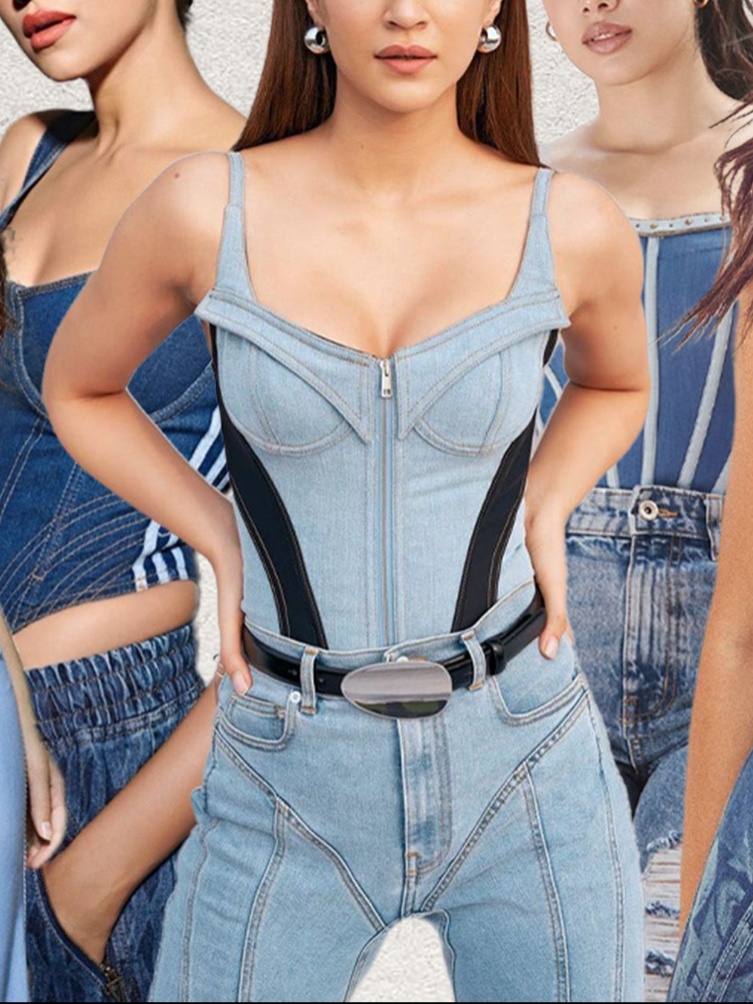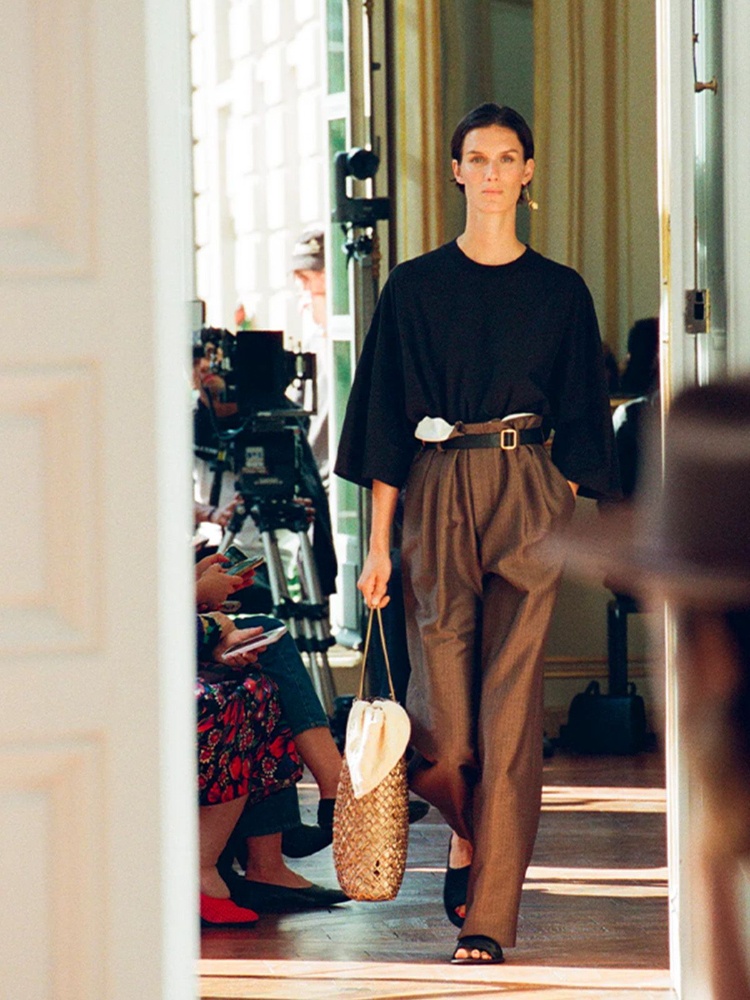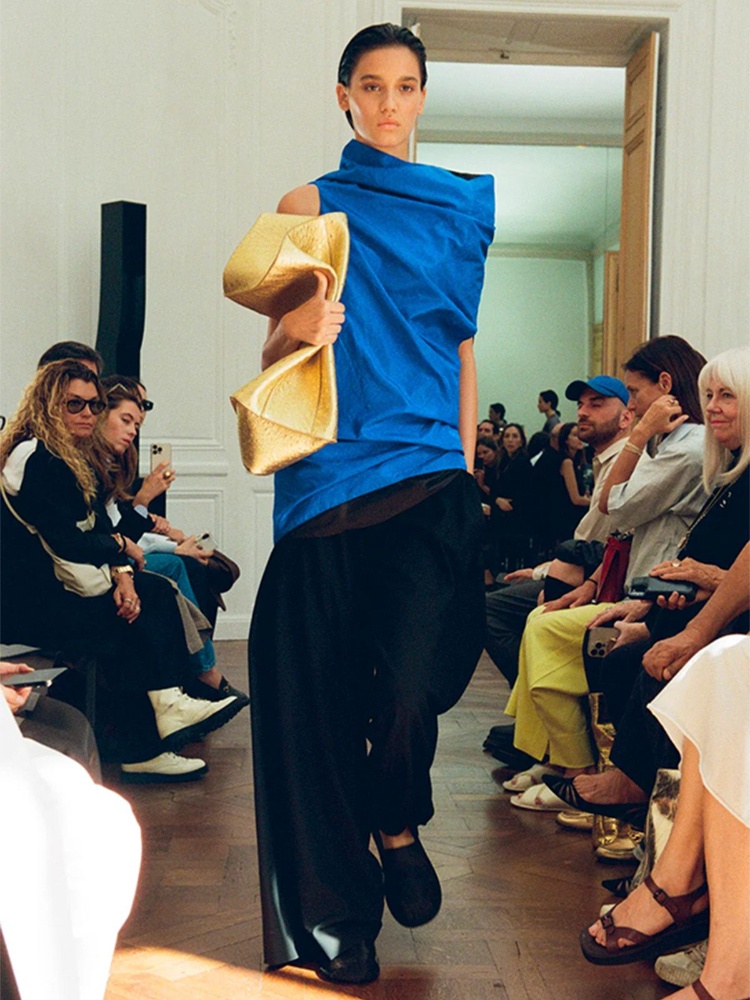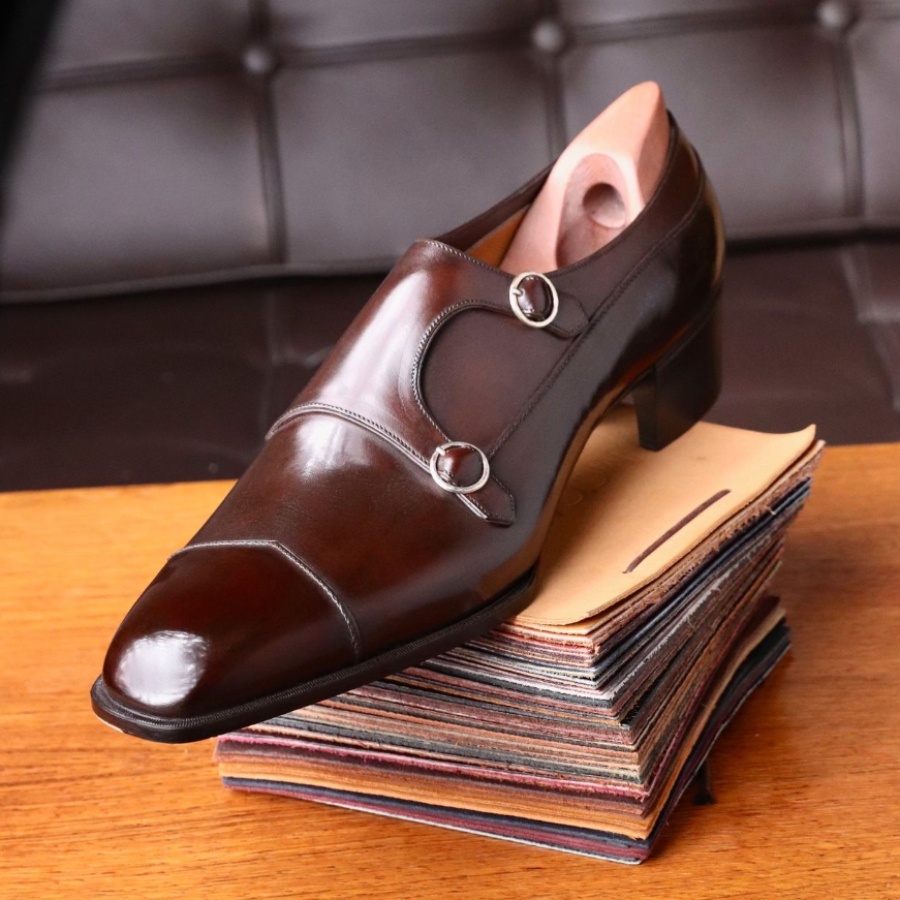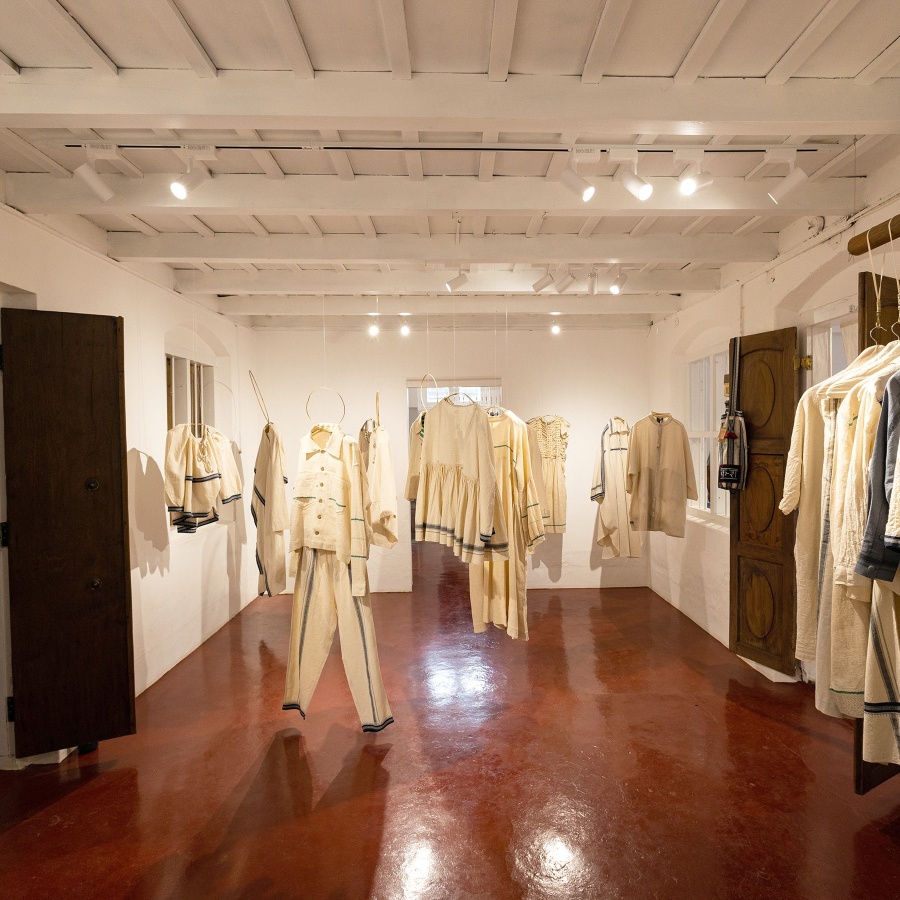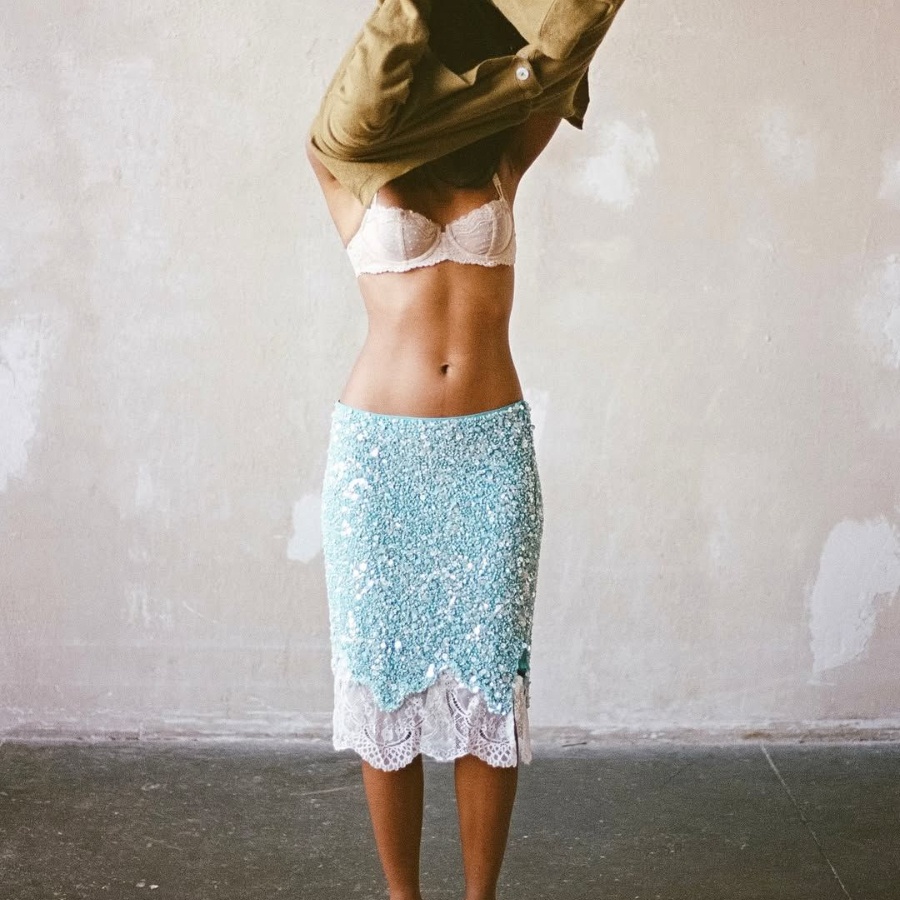There are some things in life I’ll likely never get my grubby little mitts on. Oh, you know. A palazzo on Lake Como. That vintage Porsche I secretly, shamefully love. An early Shakespearean manuscript. A toilet made of gold. And every piece in every collection from The Row.
It’s just not going to happen for me. I’ve accepted this. Yet every time The Row shows its collection in Paris, I swoon hopelessly despite myself, and with each season that passes, it’s getting worse, not better. The good news is that apparently, I’m not alone. According to insights analysts at fashion search engine Tagwalk, The Row has seen a 97 per cent increase in searches in the last three years. An ascension that doesn’t seem to be slowing down: autumn/winter ’24 saw a 104 per cent increase in searches year on year. What’s more, in Tagwalk’s brand rankings, The Row has climbed 17 spots, moving from 40th place for spring/summer ’24 to 23rd place for autumn/winter ’24. That’s one giant leap for asymmetrical draping.
The Row may live rent-free in our search histories, but don’t expect to be wearing it any time soon if you have actual rent to pay. Not even a sample; the brand’s rare sample sales draw desperate all-day outdoor neutral-toned queues, and its shows are the most exclusive at Paris Fashion Week, the antithesis of the now normalised luxury super-show. Hermès, that bastion of near-unattainable quiet luxury has expanded its show and event guest lists to help bring more entry-level client attention to its recent beauty line. But The Row is having none of this enthusiastic democratisation. Mary-Kate and Ashley Olsen’s baby, swaddled in mysterious grade A-cashmere splendour, remains safely behind doors that are closed to almost everyone.

Their lips are sealed. The interviews they choose to give are few and far between, and there isn’t an influencer collab—or even loan—in sight. If you see an influencer in The Row, she bought it. Even the brand’s Instagram account remains elegantly aloof, showcasing works of art that have presumably informed the collection. The fact that The Row’s designers were thrust into the spotlight playing an interchangeable sitcom baby before they could speak is not, in this writer’s humble opinion, a coincidence.
There is something vaguely ironic about fashion’s season-long obsession with ‘quiet luxury’, which, on TikTok at least, appears to have made a verbal segue into what is now referred to as ‘the old money aesthetic’. A trend arguably propelled, at its origin, by the rise and long reign of The Row. But wouldn’t your money have to be burning a pretty fresh new hole in your pocket for you to spend €350 (₹31,367) on a t-shirt? Or €16,000 (₹14,34,000) on a transitional coat? Here in Europe at least, ‘old money’—like, you know, the OG aristocratic kind—means rolling one’s eyes snobbishly at wild spending and thinking twice before taking that cab across town. Lest you forget you’ve got to repair your chateau’s leaky roof by summer, chérie. No matter. The trend charges on, and its penchant for good taste sans label is fortuitous in that it can be trickled down easily into more accessibly priced brands, and in that its key pieces are the sort that can be worn zillions of times without their recurrences being particularly remarkable. The planet’s happy and so is the busy working mom. But who’s buying The Row instead of the copycats?
I recently rang my sister, a 30-something tech founder and COO, and occasional The Row customer, to get the scoop on her selection process (namely, how the heck she can justify it). As a woman who is consistently required to look professional without looking flashy, but loves fashion, she told me, The Row holds unparalleled appeal. “Yes, the pieces are very pricey, but they provide what I call background wear,” she told me over the phone from Toronto. “No one notices you’ve worn it 500 times. They just see you looking sharp and can quickly refocus on the words coming out of your mouth. I know there are similar minimalist offerings from less expensive brands,” she sighed, “but I’ve tried them and I must say, from a purely aesthetic standpoint, The Row’s cuts are just better than everyone else’s. Their pieces look more…substantial, somehow.”
